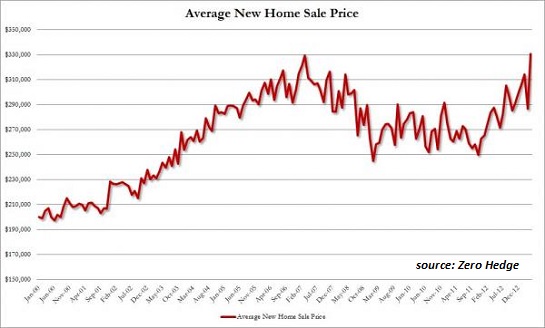by Charles Hugh Smith
The problem is central banks have created a vast pool of credit-money that is far larger than the pool of sound investment opportunities.
Why are asset bubbles constantly popping up around the globe? The answer is actually quite simple. Asset bubbles are now so ubiquitous that we've habituated to extraordinary excesses as the New Normal; the stock market of the world's third largest economy (Japan) can rise by 60% in a matter of months and this is met with enthusiasm rather than horror: oh goody, another bubblicious rise to catch on the way up and then dump before it pops.
Have you seen the futures for 'roo bellies and bat guano? To the moon, Baby! The key feature of the New Normal bubbles is that they are finance-driven: the secular market demand for housing (new homes and rental housing) in post-bubble markets such as Phoenix has not skyrocketed; the huge leaps in housing valuations are driven by finance, i.e. huge pools of cheap credit seeking a yield somewhere, anywhere:

Asset bubbles are inevitable when the pool of good investment opportunities is much smaller than the pool of credit-money sloshing around seeking a higher yield. It really is that simple. It's astonishingly easy to create hot money: just create the money in a central bank and then make it available to financiers, investment banks, global corporations and other Financial Elites at near-zero real rates of interest.
It's considerably more difficult to create a good investment opportunity: an investment that is worthy of the risk must have a sound base in fundamentals such as cash flow, return on investment, etc.
With so much hot money sloshing around, the only investments left are either highly risky (just ask the oil companies whose rigs were nationalized by Gabon) or plays on retaining purchasing power, for example, real estate in central London, where roughly half the buyers of tony townhouses are foreigners who don't even occupy their luxe digs: the last thing they need is another mansion in a global money center, but they're so desperate to park their capital somewhere low-risk that overpaying for a London manse makes excellent sense.
The problem is central banks have created a vast pool of credit-money seeking a return that is far larger than the pool of sound investment opportunities. In a world burdened by over-capacity in almost every sector, hot money is driven to seek the next emerging asset bubble as the only place to skim a yield. Empty flats in London, Manhattan or Shanghai, oil leases in Gabon, 10,000 sun-baked rental homes in Arizona, The Nikkei stock market, shares in U.S. utilities, bat guano futures--none of these asset bubbles make any sense in a world where credit is costly and scarce.
There are two other characteristics of this New Normal Bubble Economy:
1. Everyone who doesn't have privileged access to vast sums of money at near-zero real interest rates is left out; no bubble gravy for the debt-serfs, except for those who qualify for socialized mortgages from FHA or other federal agencies. (And the idea behind these government-backed mortgages isn't to enable serfs to gamble and win in the latest housing bubble, it's to lock them into debt-serfdom where they're making mortgage payments forever on a depreciating asset.)
2. All asset bubbles pop, destroying the phantom wealth of those holding claims on the underlying assets.
Is this a healthy economic system? No. Is it sustainable? No. Is it even capitalism? No.It's a Neofeudal Debtocracy of rentiers and debt-serfs and hot-money driven asset bubbles that are passed off as "investments" to the credulous and unwary.
One question distills the dynamics down to their essence: cui bono, to whose benefit?
No comments:
Post a Comment